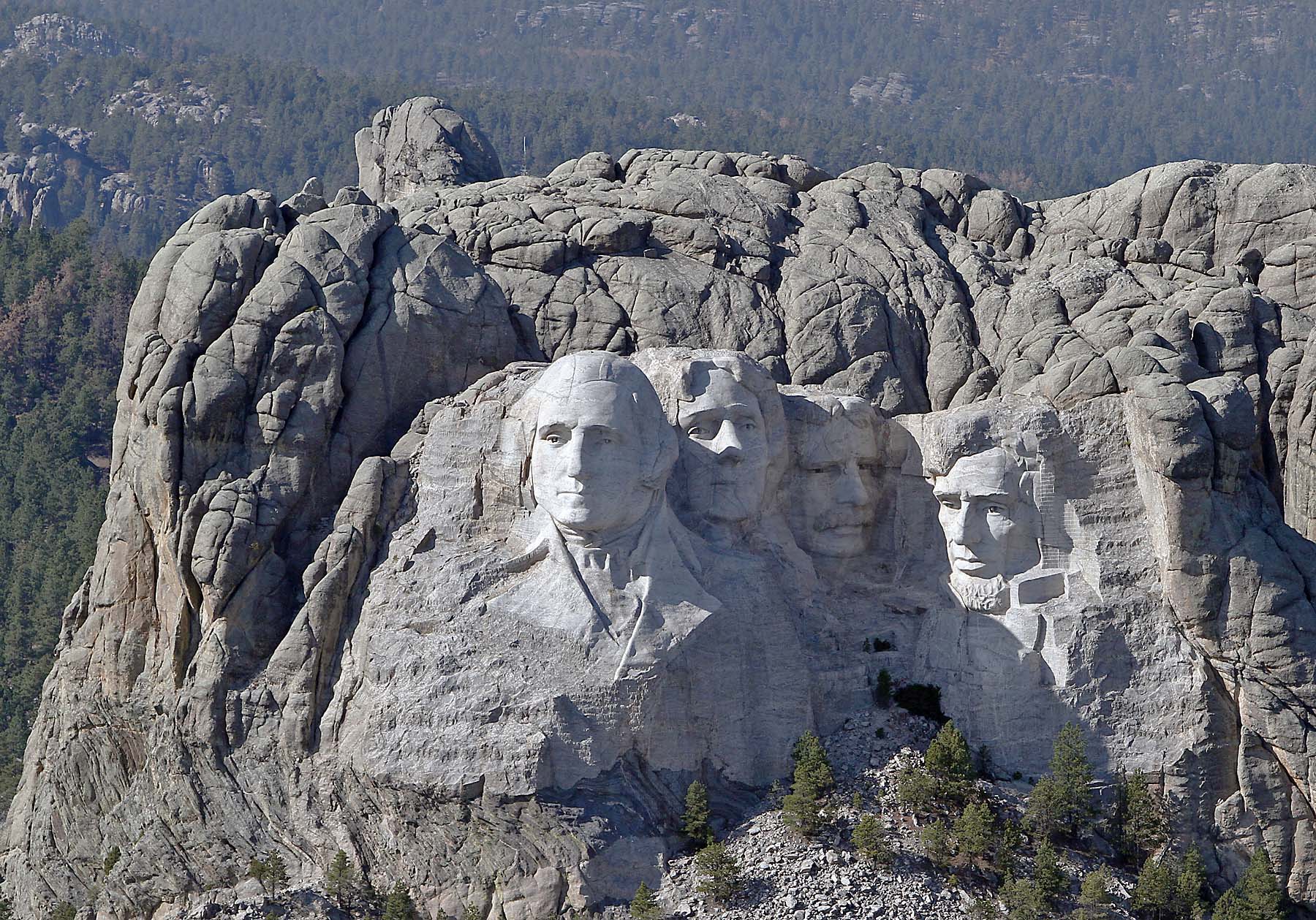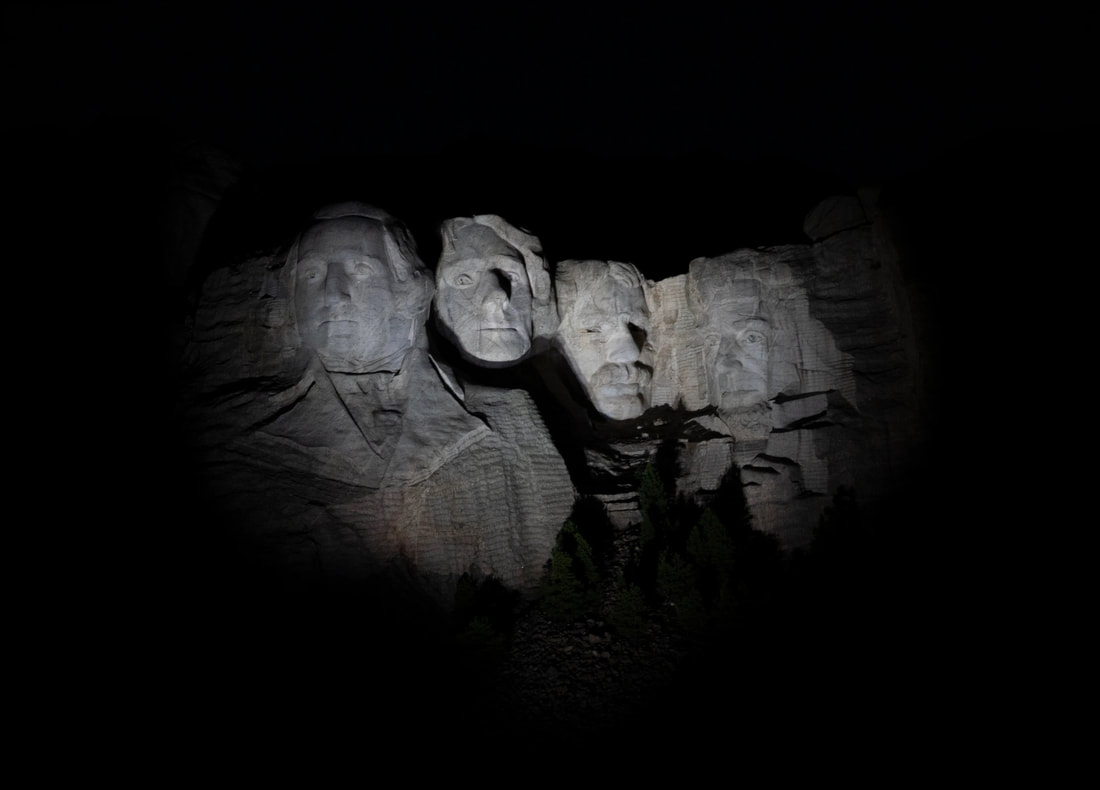MT Rushmore Eyes Tunnels has long been a subject of fascination for history enthusiasts, conspiracy theorists, and adventurers alike. The majestic monument carved into the granite face of Mount Rushmore in South Dakota is not just a tribute to four of America's most iconic presidents but also a symbol of ingenuity, history, and mystery. Beyond the visible sculptures lies a world of secrets, including tunnels and hidden chambers that spark curiosity and intrigue.
The allure of the tunnels beneath Mount Rushmore stems from the monument's historical significance and the engineering marvel that brought it to life. Many people wonder if these tunnels were intentionally created or if they are remnants of the construction process. In this article, we will delve deep into the mysteries surrounding MT Rushmore Eyes Tunnels, exploring the facts, myths, and everything in between.
As we uncover the secrets beneath Mount Rushmore, we will also examine the historical background, geological features, and the purpose behind these tunnels. Whether you're a history buff or simply intrigued by hidden wonders, this article will provide you with comprehensive insights into the enigmatic world of MT Rushmore Eyes Tunnels.
Read also:Things A Man Oughta Know Lyrics A Comprehensive Guide To Understanding The Song And Its Meaning
Table of Contents
- The Historical Context of Mount Rushmore
- Geological Features of Mount Rushmore
- Construction Secrets: The Role of Tunnels
- Debunking Myths About MT Rushmore Eyes Tunnels
- The Purpose of the Tunnels
- Exploring the Tunnels: A Journey into the Unknown
- Conservation Efforts and the Future of the Monument
- The Role of Tourism in Preserving the Monument
- Cultural and Historical Significance
- Conclusion: Unveiling the Legacy of Mount Rushmore
The Historical Context of Mount Rushmore
Mount Rushmore was conceived as a tribute to the four presidents who played pivotal roles in shaping the United States: George Washington, Thomas Jefferson, Theodore Roosevelt, and Abraham Lincoln. The monument was sculpted between 1927 and 1941 under the supervision of sculptor Gutzon Borglum. While the presidents' faces dominate the landscape, the history of the site goes far beyond what meets the eye.
Origins of the Monument
The idea for Mount Rushmore originated with Doane Robinson, a South Dakota historian, who envisioned a colossal sculpture to attract tourists to the region. Gutzon Borglum, a renowned sculptor, was commissioned for the project, and he chose the presidents based on their contributions to the nation's growth and development.
Construction of the monument was no small feat. It involved thousands of workers and cutting-edge technology for its time. The use of dynamite, drills, and hammers transformed the granite mountain into a masterpiece that continues to inspire millions.
Geological Features of Mount Rushmore
Understanding the geological composition of Mount Rushmore is essential to comprehend the existence of tunnels beneath the monument. The granite rock that forms the mountain is hard and durable, making it an ideal medium for sculpting. However, this same hardness posed challenges during construction.
Formation of the Mountain
Mount Rushmore is part of the Harney Peak granite batholith, which formed approximately 1.7 billion years ago. The mountain's granite is resistant to erosion, which is why the monument has withstood the test of time. However, this resistance also meant that tunnels and chambers had to be carefully planned during construction to avoid structural weaknesses.
Construction Secrets: The Role of Tunnels
During the construction of Mount Rushmore, tunnels were indeed created, but their purpose was practical rather than mysterious. These tunnels served as access points for workers and equipment, ensuring the safe and efficient completion of the monument.
Read also:Asheboro News Stay Informed With The Latest Updates And Insights
Access Tunnels
Access tunnels were carved into the mountain to allow workers to reach various parts of the sculpture. These tunnels were narrow and designed for functionality rather than aesthetics. They facilitated the movement of materials and provided ventilation for workers operating heavy machinery.
According to historical records, some of these tunnels were sealed after construction was completed, leaving only a few accessible to the public. This decision was made to preserve the integrity of the monument and prevent unauthorized exploration.
Debunking Myths About MT Rushmore Eyes Tunnels
Over the years, numerous myths have surfaced regarding the tunnels beneath Mount Rushmore. Some claim that the tunnels were used to hide treasures, while others believe they were part of a government conspiracy. However, these theories lack credible evidence.
The Treasure Theory
One popular myth suggests that the tunnels beneath Mount Rushmore house hidden treasures, including gold and precious artifacts. While this idea is captivating, there is no historical or archaeological evidence to support it. The National Park Service, which manages the site, has consistently debunked such claims.
The Purpose of the Tunnels
The primary purpose of the tunnels beneath Mount Rushmore was to aid in the construction and maintenance of the monument. These tunnels were not designed for public use or to conceal secrets but rather to provide practical solutions to the challenges faced during the sculpting process.
For instance, the Hall of Records, a chamber located behind Abraham Lincoln's head, was created to store historical documents and artifacts. Although it is not accessible to the public, it serves as a testament to the monument's cultural significance.
Exploring the Tunnels: A Journey into the Unknown
Exploring the tunnels beneath Mount Rushmore requires special permission and is typically restricted to authorized personnel. However, the National Park Service occasionally offers guided tours for educational purposes, allowing visitors to gain a deeper understanding of the monument's history and construction.
Guided Tours
During these tours, visitors can see remnants of the construction process, including abandoned tools and equipment. The tours also highlight the geological features of the mountain and the challenges faced by the workers who brought the monument to life.
Conservation Efforts and the Future of the Monument
Preserving Mount Rushmore is a continuous effort that involves monitoring the structural integrity of the monument and addressing potential threats. The tunnels beneath the mountain play a crucial role in these conservation efforts, as they provide access to areas that require maintenance.
The National Park Service employs advanced technology, such as laser scanning and drone surveillance, to monitor the monument's condition. These efforts ensure that Mount Rushmore remains a symbol of American history for generations to come.
The Role of Tourism in Preserving the Monument
Tourism plays a vital role in funding the preservation of Mount Rushmore. The revenue generated from visitor admissions and merchandise sales supports conservation efforts and educational programs. By visiting the monument, tourists contribute to its upkeep and help spread awareness about its historical significance.
Cultural and Historical Significance
Mount Rushmore is more than just a sculpture; it is a symbol of American democracy and the enduring legacy of its leaders. The monument represents the ideals of freedom, unity, and progress, making it a cherished destination for people around the world.
Understanding the tunnels beneath Mount Rushmore adds another layer of appreciation for the monument's complexity and the ingenuity of its creators. These tunnels are a testament to the dedication and hard work of the men and women who brought this masterpiece to life.
Conclusion: Unveiling the Legacy of Mount Rushmore
In conclusion, MT Rushmore Eyes Tunnels are a fascinating aspect of the monument's history and construction. While they may not harbor hidden treasures or secrets, they serve as a reminder of the incredible engineering feats that made Mount Rushmore possible.
We invite you to visit Mount Rushmore and explore its wonders for yourself. Whether you're fascinated by its history, geology, or cultural significance, the monument has something to offer everyone. Don't forget to share your thoughts in the comments section below and explore other articles on our website for more insights into America's rich heritage.
For further reading, we recommend the following sources:


